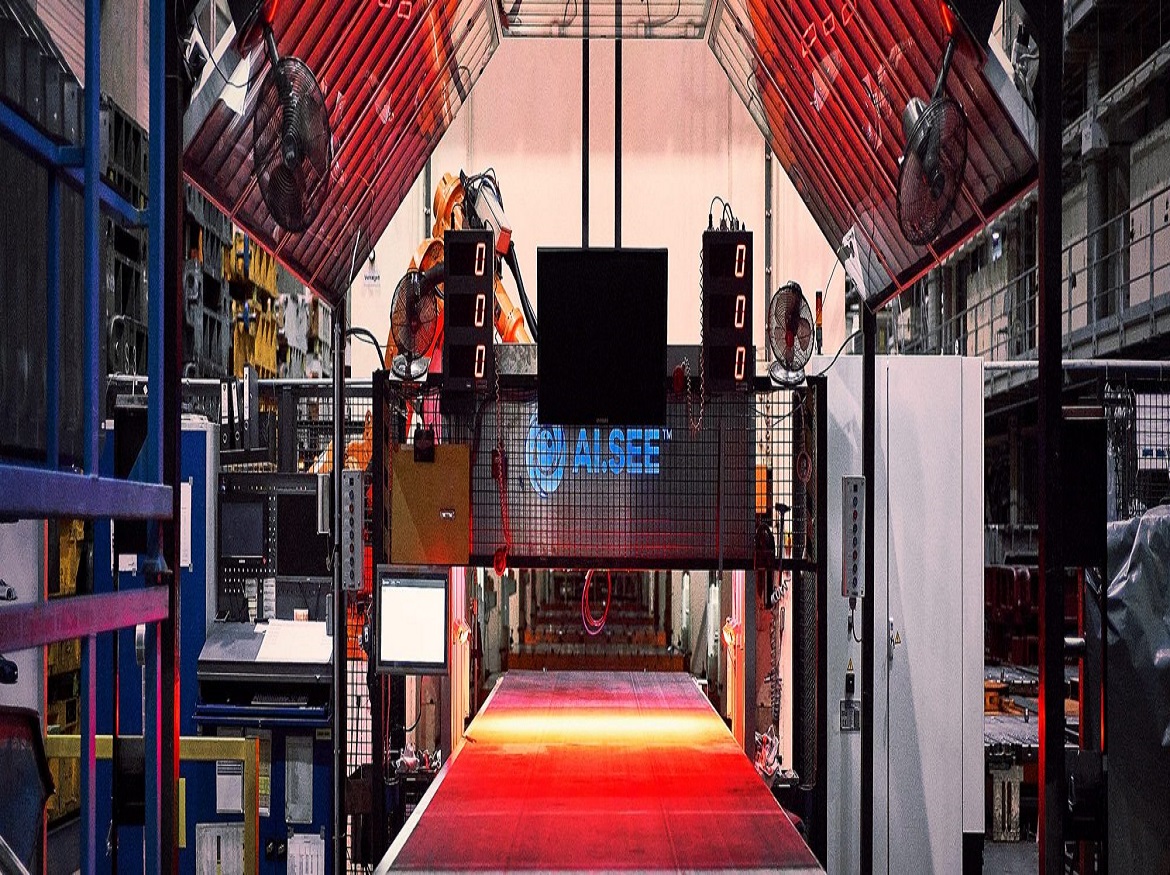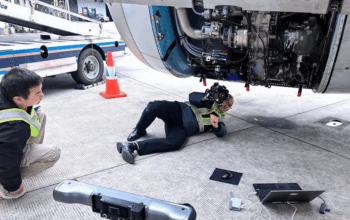Thanks to modular recording technology, AI.SEETM visual quality control and defect detection system for press shop producers can be quickly and easily installed into both new and old outfeed conveyors.
Live test photos of components with common press shop flaws, such as cracks, constrictions, or fractures, are already assessed on the line, and following the test, the necessary follow-up procedures are regulated.
Digitization in the press shop of Industry 4.0
Modernizing quality assurance in the press shop is now possible thanks to the widespread adoption of powerful artificial intelligence in all facets of the manufacturing process. The time necessary for a visual inspection is where the limits of traditional quality control are mostly approached. Technical means are required if you want to ensure effective and thorough testing of the manufactured part during manufacturing. Without AI, even these, however, quickly reach their limits. It is very difficult and expensive to design fixed algorithms for digitization, which are utilized for the analysis of sensor data of quality-relevant properties. They are not, however, flexible in use.
On the other hand, intelligent test procedures can offer complete quality control in line while increasing efficiency through optical quality assurance. For a press shop, this means that each production part is checked for quality flaws without any gaps, even at the press exit, allowing problems to be remedied right away.
Digitization of press shops with AI.SEE™ – press shop retrofit
Your press shop’s quality assurance can be brought up to date completely with the assistance of AI.SEETM. Supplanting the whole press system isn’t really important. Subsequent to investigating the press shop, computerization specialists track down the right answer for streamlining quality control. AI.SEETM from Elunic provides the opportunity to rely solely on optical quality assurance. As a result, the press room does not need to be completely rebuilt. Standard cameras can be installed to provide quality assurance with the decision-making capabilities of a trained quality management employee. Additionally, the retrofit may enable your press shops to once more achieve longer intervals for maintenance. For systems that have been in use for a considerable amount of time, these maintenance intervals frequently turn into a cost factor. The modernization not just makes progress concerning proficiency and efficiency, yet additionally brings about lower support and upkeep costs.
AI.SEE™ inspection cell in the press shop – the complete solution from a single source
The AI.SEETM inspection cell adds a completely automated quality check to the current outfeed conveyors. The inspection cell is configured to operate in a highly contaminated, high-speed press shop manufacturing environment.
Typical fault patterns in a press shop – constrictions, cracks, etc.
Cracks, punch marks, necking, breakage, and scratches are typical flaws. For instance, if the material is given with insufficient quality, this could easily result in incorrect parts being produced in the press shop. Other aspects of production, in addition to the general quality of the materials, are important. The manufacture of a component may not be able to meet quality standards due to tool wear or tolerance issues.
Find out with just a few questions whether your problem can be solved with AI.SEE™
The system can be installed in-line using a test facility in addition to the completely automated quality check, allowing for the low-cost testing of artificial intelligence. If you’re interested, please complete the form and get in touch with our contact person.
Significant cost savings through early error detection
Cracks, punch marks, necking, breakage, and scratches are typical flaws. For instance, if the material is given with insufficient quality, this could easily result in incorrect parts being produced in the press shop. Other aspects of production, in addition to the general quality of the materials, are important. The manufacture of a component may not be able to meet quality standards due to tool wear or tolerance issues.
When looking at the components, different perspectives frequently result in conflicting interpretations, and if a fault is not found, additional production processes cost the customer a lot of money.
Manufacturing processes in pressing plants
Understanding the approach utilized in the production process is crucial for being able to optimize the quality control of sheet metal parts in the best way possible. Forming is a key component of the manufacturing process for sheet metal products. Forming is a manufacturing technique that neither adds nor subtracts material. It includes rolling, open die forging, die forging, extrusion, deep drawing, and bending. It keeps its bulk and cohesiveness as a result.
The plastic material must first be sized correctly before mechanical forming can take place in the press shop. The raw materials from the provided state are cut in a press shop with the utmost precision in preparation for further processing by forming with the aid of cutting systems, cutting systems, or lasers.
Click on the following link Metrologically Speaking to read more such blogs about the Metrology Industry.









